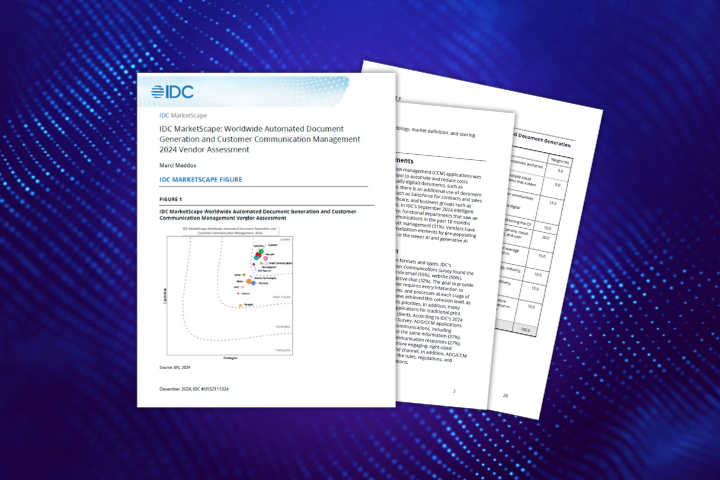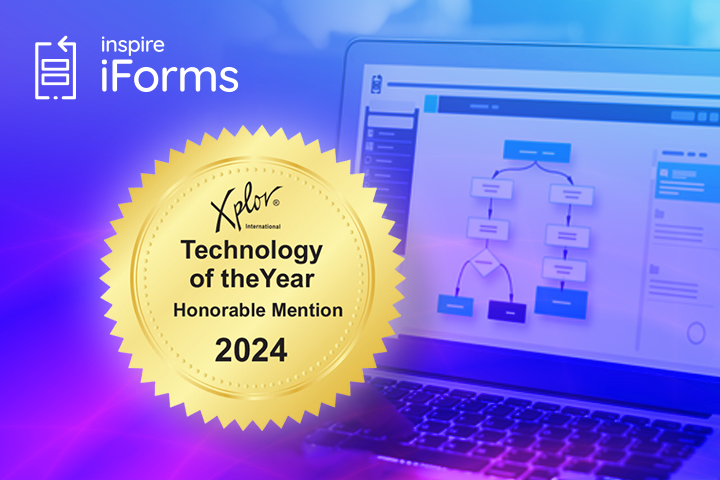
Accounting has traditionally been heavily reliant on manual processes, but in recent times there has been a surge in automated solutions. Companies have been deploying technologies to scale operations and optimize workflow to save costs and time. In a 2024 study, 76% of CFOs indicated that digital transformation was key to their success strategies. Essential accounting departments such AP/AR, payroll, and tax, are replacing their routine time-consuming tasks with automated solutions to make the best use of their resources.
Here are the four accounting processes your business should automate to save costs and time:
Accounts Payable
The accounts payable department is often overloaded and prone to errors due to the heavy reliance on manual tasks. It's no surprise that the top pain points for businesses, small to large-scale, are centered around manual processes, such as data entry, approval follow-up, looking for lost or missing invoices, filing, and resolving discrepancies. These challenges can all be addressed with automation.
Automation can drastically cut the cost of repetitive tasks. According to a Levvel Research report, the cost of processing an invoice manually is $15 on average, compared to just $2.36 per invoice with an automated system.
Accounts Payable automation gives your AP team the ability to route invoice approvals, process payments electronically, speed up invoice coding and eliminate 83% of manual data entry. An AP automation solution such as Quadient Accounts Payable Automation not only reduces costs, but also moves your entire AP process into the cloud, so that remote or geographically separated teams can all access AP. It enables stronger controls, improved quality, decline in errors and duplicate payments, and mitigates major AP risks such as fraudulent payments.
How does AP automation benefit your business?
- Eliminates Manual Data Entry and Lowers Costs: Manual processes lead to lost data, errors, duplicate invoices and a high cost per invoice. Automation solutions take care of the data entry and help eliminate errors, providing accounting teams the ability to eliminate high-cost, repetitive activities. For example, in a manual setting, an invoice will have to be opened, sorted and coded, routed by hand for manual review, approved, validated and then finally processed and paid. Quadient AP takes this entire process online, saving hours and hours of data-entry and routine follow up to process one invoice. Organizations that have implemented AP automation realized significant savings of 60-80% over manual processing.
- Financial System Integration: Automation solutions such as Quadient AP integrate with your existing accounting software – QuickBooks, Sage, NetSuite, and others – enabling you to enhance your core financial systems. Look for solutions that allow invoice, purchase order, and payment data to flow seamlessly back and forth between your accounting software and AP automation solution. Some AP automation solutions manage integrations by file-based transfer, which can create more inefficiencies. Look for a solution that has a truly seamless integration.
- Reduce Risks: Fraud most commonly occurs within the AP department due to the volume of money that leaves the company through this division. In 2023, payment fraud attempts spiked by 71% for US businesses alone. Not only does this impact the financial workflow of the organization, but also affects brand reputation amongst customers and vendors. AP automation can be highly effective in preventing fraud. It lets you add sophisticated approval controls, ensuring that each invoice, PO or payment is approved by the right person at the right time. With preventative and detective controls such as verification of vendors, digital audit trails, real-time monitoring, and invoice to payment matching, the software can help identify anomalies and establish accountability. An automated approval process provides enhanced visibility into when invoices and payments were approved and by whom. Auditors can benefit from real-time monitoring, and following electronic trails to diagnose inconsistency and establish accountability.
Accounts Receivable
Manual AR systems involve preparing and mailing invoices, depositing checks and waiting for funds to settle, poor visibility into payment status and a lag of mundane tasks resulting in employee exhaustion. According to a recent study, 91% of firms with fully automated AR systems reported increased savings, cash flow and growth. In another study, it was found that 59% of firms link poor cash flow and forecasting to outdated, manual accounts receivable practices.
Why Does Your Business Need AR Automation?
- Faster Payments: For several businesses, a common challenge is receiving payments in time. Automation lets you prepare invoices at lightning speed, and instantly delivers it to clients on a custom set schedule. With automated tools and features, your AR team will be able to remove guesswork and anxiety around collecting payments in time. You can ensure everyone – including your sales and customer service team that are often isolated from the collections process – is up-to-date on the status of payments. If a team member leaves for vacation or your team has to suddenly work from home due to a crisis, it becomes easier for anyone to access data or pick up where someone else left off from.
- Improve DSO: To reduce DSO, it is crucial to have an efficient invoicing and collections process. Automation eliminates errors that come with manual processes. Without automated controls, the accounts receivable team has to spend time updating spreadsheets, fixing human errors and hunting customer information. An automated solution makes the collection process faster and easier. Finance professionals will not have much luck improving AR if they cannot accurately measure the performance. Having easy access to key performance indicators like DSO and accounts receivable turnover is crucial. An automated measurement system will help you track how your AR is doing on DSO and whether it is getting closer to or further away from the business’s financial goals.
- Reduce Cost and Increase Accuracy: By replacing focus from routine, time-consuming tasks, to profitable activities, AR teams will be able to utilize their time and resources on value-based projects. For example, invoice automation removes the costs accruing from printing and posting in-house invoices. AR automation takes human error out of the loop. When core functionalities are manually segmented, it becomes a major challenge for the finance team to focus on improvements and scaling opportunities. The more visibility you have, the better your AR accuracy. Furthermore, inaccurate or misplaced invoices, delays, missing targets, etc. affect how external stakeholders such as customers or vendors experience your business.
Payroll
The more repetitive your accounting process, the more beneficial an automated solution could be for your business. Discrepancies and mistakes within a payroll system can have far-reaching consequences, often resulting in a deterioration of trust in the company. Payroll can become a complex function without the right set of automated tools and features. From calculation accuracy to intricate tasks such as compliance with tax law, the amount of data processing that goes into payroll can get overwhelming.
That’s why as many as 1 in 3 small business owners indicate that they have made payroll errors, and 25% have been fined for payroll tax mistakes. Manual processes pose a high risk in times of heightened data protection within payroll. Several factors contribute to the current complex state of payroll systems, such as control over high volume of data, government reporting and declarations and high reporting frequency.
How Does Automation Empower Payroll?
- Reduced Compliance Risk: Automated payroll ensures that the correct amount of tax is being withheld from the employee and the employer. Businesses can automate tax filing and avoid any penalties with the government for non-compliance. Automated solutions generally have built-in geographical tax systems. Whether your employees are all within one state or working from across borders, an automated system can easily make the accurate calculations. Miscalculations can result in penalties and fees from the state tax agency.
- Fast and Simple Wage Calculation: An automated payroll system gives accurate performance. From basic salaries and hourly wages, to complex instances such as overtime, commissions, raises, wage deduction, tuition reimbursements, and retroactive pay, everything can be processed online. Automated payroll removes the need for manual paycheck writing, saving you time and extra costs. The system generates stubs and paycheck and allows direct deposit. Remember that such processes aren’t entirely error-free when manual inputs are involved.
- Scalability: When you automate your payroll data, you can scale your workload to manage multiple locations. You also have the flexibility to access your data anytime, from any device with a single sign-on. Payroll teams can easily add new employees as and when they need to. What’s more, a cross-border payroll solution enables expansion into new locations. By removing the mundane tasks associated with importing and exporting, you can reduce your time spent on entering information and eliminate workflow struggles to improve operational efficiencies.
Audit
A recent report found that 45% of CEOs believe that their organization will not be viable in a decade if they continue business as usual. That means finding better and more efficient methods of working. A high volume of complex data is making auditors shift towards automation technology. The benefits are paramount – data integration, analytics programs, enhanced risk assessment, better reporting of processes. Reports generated by auditing software are highly intuitive, making it easier for auditors to take data-driven decisions.
The future of auditing will involve real-time transaction analysis, risk evaluation, data validation, and multiple audit functions that can be performed through automation. The main benefit is that it takes care of repetitive manual tasks, freeing the team to spend more time performing value-added activities.
How Does Automating Audits Impact Your Business?
- Reduced Costs & Increased Output: Teams can operate and execute audit tasks at an accelerated pace by reducing time spent on manual activities, leading to significant cost savings. Moreover, automation makes results and data highly traceable and auditable. When mistakes take place, they can be detected instantly and amended within the system.
- Better Use of Resources and Risk Management: When routine manual tasks are replaced with automation, finance teams have the capacity to focus on other activities. Processes that would generally take hours and days, can be completed online within minutes. Teams can learn new skills and keep pace with changes within the industry that can have a long-term impact on the business. This includes better risk management skills. Transparency into your business finances ensures audit management becomes predictable while working on audit findings to lower risk probability.
- Improves Data Accuracy: Paper or semi-automated audits are not only time-consuming but also restrictive in forecasting financial workflows. There is a serious lack of visibility and processes, and quite vulnerable to human error and bias. An automated audit solution means finance teams can track evidence in real-time.







